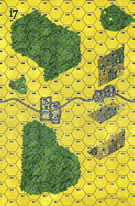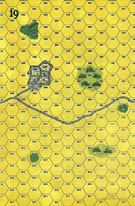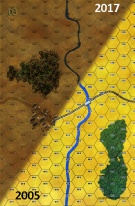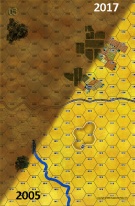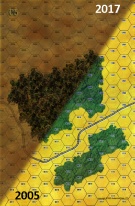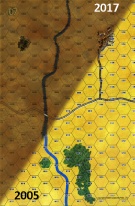| Author |
TheDoctor
|
| Method |
Solo |
| Victor |
Soviet Union |
| Play Date |
2014-02-02 |
| Language |
English |
| Scenario |
IrCu013
|
Setup: The Americans spread their units around the 40-meter level on Board 14, with infantry in the five entrenchments, and the M26's dug in around the Americans. The Americans cannot move until they spot a Soviet unit, and choose to fight it out rather than attempt a breakout through the many Soviet tanks and SMG's.
Play: The Soviets enter on six different board edges, and approach the Americans from all sides at an equal pace so that the Americans are completely surrounded by the time they spot a Soviet unit, releasing them to move. They arrive at the front of the Americans' defensive line on Turn 7, and weather the mild American OF, and prepare for an wide-scale assault.
The Soviets and Americans spend the next three turns exchanging DF, with minimal results on either side, in a attempt to soften the Americans before the big push. The Soviets decide to assault as dawn breaks on Turn 11, and launch the attack, which encompasses all the disrupted and good-moraled American units and leaders on the map.
The Soviets make good progress on the western and eastern sides of the hill, while the Americans in the entrenchments on the poles of the hill take their toll on the Soviets, and survive the assaults for seven turns, and beat off the first wave of Soviet attackers. In the middle of the hill, the Soviets chase down the reduced Americans in the center of the hill.
After three more turns of mopping up Americans, the Soviet force combines, and quickly assault the Americans holding out at the edge of the hill on the 60 meter hexes. The last Americans from the 2nd Armored hold on for three more turns before collapsing completely. The Soviets finally take the entire hill after seven and a half hours.
Results: Soviet Major Victory. The Victory Point Count stands at 62-82, with the Soviets having a twenty point lead.
|




 IrCu012
IrCu012 




